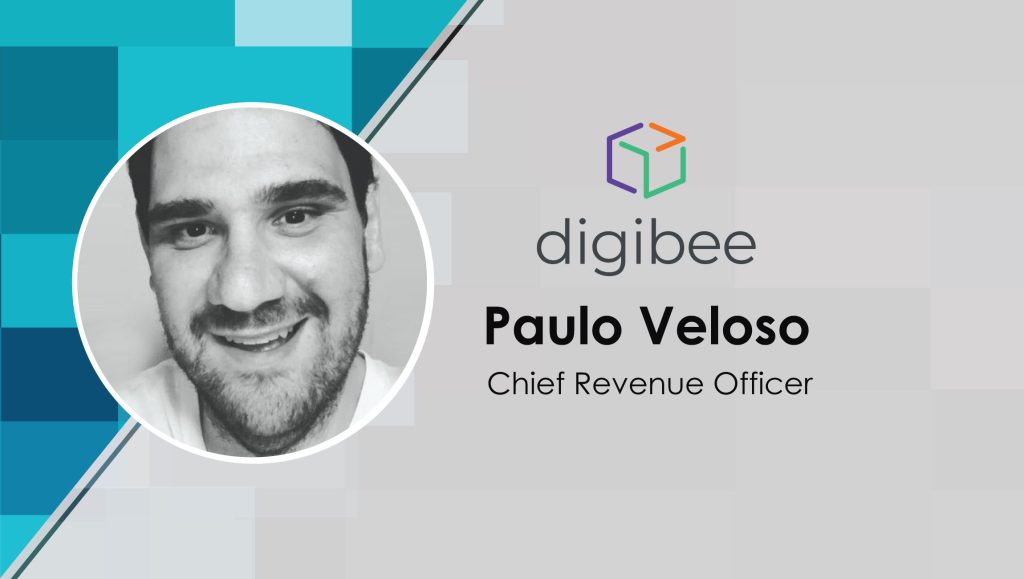Paulo Veloso, Chief Revenue Officer at Digibee highlights some of the common mistakes revenue teams make with tips on minimizing them:
________
Welcome to this SalesTech Star chat Paulo, tell us about yourself and what you are most looking forward to as CRO at Digibee?
I am a super passionate leader. My entire career has been focused on growing companies and developing people. I am truly excited about this opportunity, as it aligns perfectly with my enthusiasm for creating customer value and satisfaction, driving revenue growth, cultivating strategic partnerships, and guiding high-performing teams. My dedication extends beyond achieving our ambitious revenue targets; I am equally focused on championing innovation and delivering enduring value.
What do you feel modern CROs need to do more of to drive sales and revenue goals while building stronger teams from the ground up?
Modern CROs play a pivotal role in driving sales and revenue goals. To accomplish this, there are several key strategies that I believe modern CROs should focus on:
- Customer-centric approach: Understanding customer needs and preferences enables the development of tailored solutions and personalized experiences that drive revenue growth.
- Data-driven decision-making: CROs must leverage data analytics and technology to gain deep insights into customer behavior, market trends, and sales performance.
- Strategic partnerships: Building strategic partnerships with complementary businesses can open up new channels and customer segments.
- Sales and marketing alignment: Ensuring close alignment between sales and marketing teams is essential. A cohesive strategy, shared goals, and effective communication can optimize lead generation and conversion rates.
- Investment in technology: Embracing the right technologies, such as CRM systems, marketing automation, and AI-driven sales tools, can streamline processes, enhance productivity, and provide valuable insights into customer interactions.
- Continuous training and development: To build stronger teams, CROs should invest in ongoing training and skill development programs for their sales and revenue teams.
- Performance metrics and accountability: Establishing clear performance metrics and holding teams accountable for results is essential. Regular performance reviews and feedback sessions can drive continuous improvement and motivation.
- Culture of innovation: Encouraging a culture of innovation within the organization can lead to the development of new products, services, or sales strategies that differentiate the company in the market.
In summary, modern CROs need to combine customer-centricity, data-driven strategies, and a focus on team development to successfully drive sales and revenue goals in today’s competitive landscape.
Can you talk about some of the revtech and salestech that you feel should be go-to tools for B2B teams today?
There is no secret sauce, but there are necessities that all teams need to make productivity higher. I always try to consolidate the tools to avoid point solutions when possible. Here are some of my go-to platforms:
- CRM – Basic tool to manage relationships: My preference in this space is Salesforce.
- Marketing automation: HubSpot still dominates this space.
- Customer success: Gainsight is the most important one.
- ABM/intent: 6sense is a must have in this space.
- Customer engagement: Outreach and SalesLoft dominate, but I started adopting Gong and I am impressed with their AI capabilities.
- Contact data: ZoomInfo is better for North American companies, and Apollo works best in some regions like Latin America and Europe.
- Revenue intelligence: Gong has definitely shown results above any other tool.
- Data analytics: Tableau without a doubt.
Read More: SalesTechStar Interview with Michael Walton, VP Product, Sales Hub, HubSpot
What are some of the common mistakes you see modern CROs make when strategizing new plans or processes?
I see a lot of leaders try to create processes that are either too complex or too difficult. Any new process should have the intent to remove friction, not to create more of it. We live in a time of simplicity, where customers are more and more willing to do business with vendors that are simple to deal with. But don’t be foolish, simple is HARD, because it requires a maturity level that most companies never achieve as they grow.
Also, when planning for anything, we need to consider the impact that this will have on the business, but more importantly, the customers. Leaders tend to often just look for internal impacts, but we need also to look outside of our organization. Disrupting business or changing rules frequently is not the best way to remove attrition and promote growth. When promoting changes, make it once and stick with that until you have definitive proof that you need another change.
Lastly, with any new strategy or process, make sure you promote accountability by following it. Processes that are often neglected and plans that are never implemented generate a bad reputation for the CRO, so when implemented, hold the team accountable to delivering it.
A few thoughts on the impact of AI on the future of revenue generation and sales?
Businesses are asking marketers to do more with less. In FY 23, most companies did plan to reduce headcount by 25% but yet increase the marketing spend by 13%. And the reason behind this is that program efficiency declined about 62% half over half. The biggest hurdle now is getting attention in crowded markets. AI can play a huge role in enhancing marketing and sales efficiencies. .
Gartner predicts that by 2025 around 30% of all outbound messaging will be synthetically generated. The main reasons for that hyper-growth are: content customization is a must (but takes time if not automated); productivity and agility in delivering new strategies quickly and more efficiently; and improving the time to value over investments with quicker results.
There are also some risks in adopting AI that must be considered. Some of them are: staff adoption, accuracy, plagiarism, privacy regulations in some operating regions and bias. Each company needs to evaluate the appetite for innovation and risks, but all of them need to start using AI tools to boost productivity immediately.
Five things you’d say every CRO needs to do to make a difference to their teams and brand?
- Build knowledgeable teams: Empowering through information and prioritizing sales enablement are crucial. When teams are well-informed, they collaborate more effectively and maintain consistency in the company’s messaging.
- Promote a performance culture: It’s essential to ensure that a minimum of 80% of all sales representatives consistently achieve their annual quotas. Success should be both an expectation and a driving force for others to emulate.
- Buyer-centric mindset: Create a replicable sales process centered on customer outcomes. Building strong customer relationships and clearly articulating the unique value proposition for each customer interaction, both individually and collectively with your team, is paramount.
- Be data-driven: Generating revenue has become a digital and data-driven exercise. Focusing on aligning the teams, operations, processes, systems and data that support the end-to-end revenue cycle has been key to success.
- Big-picture thinking: Look at the go-to-market process holistically to create avenues for better performance. Make sure that all functions on the GTM processes are aligned, working together and looking not only for what’s going on now, but also ahead. Also, be agile, promoting changes quickly and recognizing sooner when is the right time to execute them.
Read More: Building a Winning Tech Stack for Sales and Marketing Collaboration
The Digibee Integration Platform allows enterprises to compete and excel in today’s rapidly changing digital environment. The technology is cloud native, low code, fully recyclable, and discoverable — connecting applications, processes, and people for faster time to market without a major investment. Digibee is the preferred iPaaS solution for 250-plus corporate customers including Assai, B3, Barkley, Bauducco, GoPro, Oobe, Payless and others.
Paulo Veloso is Chief Revenue Officer at Digibee























